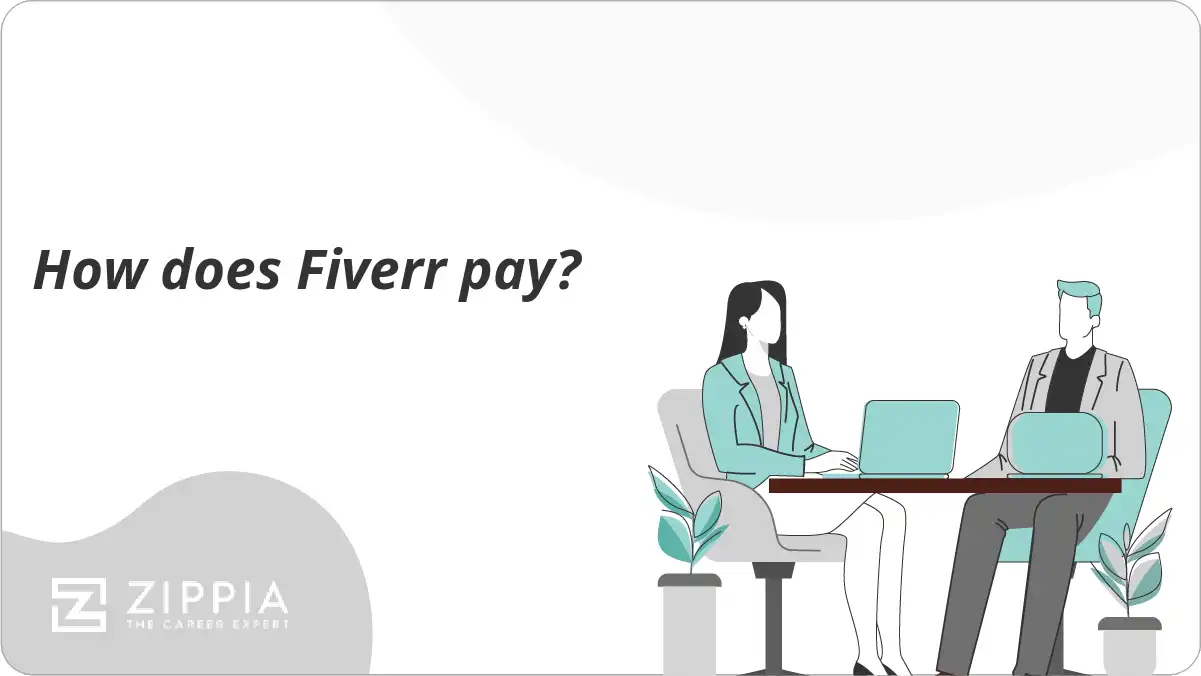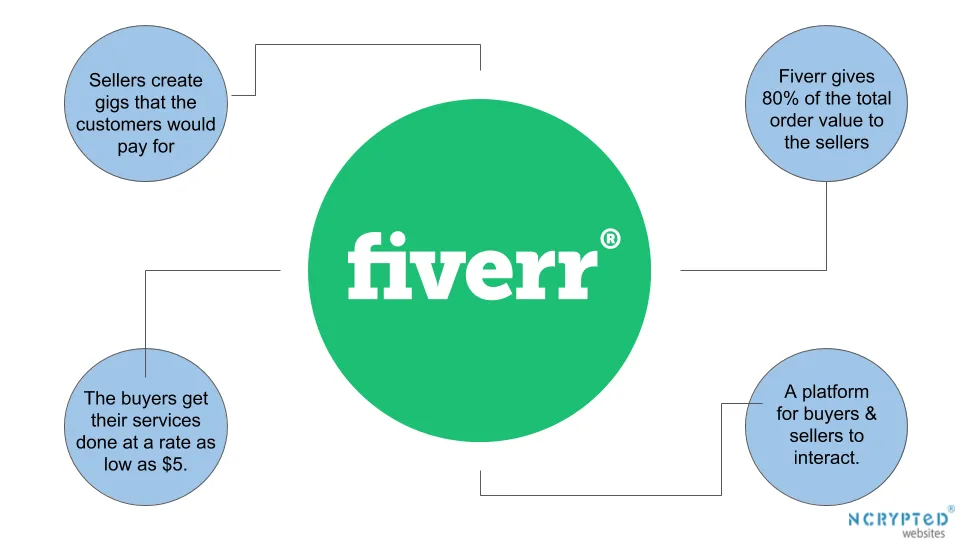When investing in stocks, one of the key aspects to consider is whether a company pays dividends. This little nugget of information can greatly influence your investment strategy and overall financial health. So, does Fiverr pay dividends? To answer this, we need to dive into the world of dividends, how they work, and what they mean for investors like you and me.
What Are Dividends?

Dividends are essentially a portion of a company’s earnings that are distributed to its shareholders. Think of dividends as a reward for investing in a company; it's like getting paid just for holding onto your shares! Not all companies pay dividends, and the ones that do can vary significantly in terms of how much and how often they distribute these earnings.
Here are a few key points about dividends you might find interesting:
- Types of Dividends: There are various types of dividends, including cash dividends (the most common), stock dividends (more shares issued), and special dividends (one-time payments).
- Dividend Frequency: Companies can pay dividends on different schedules. The most common frequencies are quarterly, semi-annually, or even annually.
- Dividend Yield: This is a useful metric that shows how much a company pays in dividends relative to its stock price, expressed as a percentage. A higher yield can indicate a potentially attractive investment.
So, why do companies pay dividends in the first place? The reasons could include:
- To attract investors, particularly those looking for a steady income stream.
- To signal confidence in their financial health and business strategies.
- To reward loyal shareholders, creating a sense of trust and reliability.
In summary, dividends are a crucial aspect of investing. They not only provide income but also reflect a company’s financial strategy and stability. Now, let's explore whether Fiverr, an online marketplace for freelance services, is part of this dividend-paying club!
Also Read This: A Guide to Becoming a Freelance Designer and Finding Clients
Overview of Fiverr's Business Model

Fiverr is an online marketplace that connects freelancers with clients looking to hire for a variety of services. Operating on a unique business model, Fiverr allows freelancers to offer their skills in categories such as graphic design, writing, video editing, programming, and more. This innovative platform was launched in 2010 and has since transformed the way people find and offer freelance services.
At its core, Fiverr's business model is based on a commission structure. Here’s how it works:
- Service Listings: Freelancers, known as "sellers," create profiles and list their services, which are referred to as "gigs." These gigs often start at just $5, making it accessible for clients to try out new services.
- Transaction Fees: Fiverr earns revenue by taking a percentage of each transaction. When a seller completes a job, Fiverr retains 20% of the payment as a service fee, which ensures they maintain a steady income while providing a platform for freelancers.
- User-Friendly Experience: Fiverr emphasizes user experience, making it easy for buyers to browse through gigs, read reviews, and communicate directly with sellers.
In addition to its standard offerings, Fiverr also provides paid promotions and premium services, helping businesses with quick visibility. This tiered service catalog allows Fiverr to cater to both budget-conscious individuals and larger organizations looking for high-quality talent.
Also Read This: How to Make Your First Sale on Fiverr
Fiverr's Financial Performance

When analyzing Fiverr's financial performance, it's essential to take a look at various indicators, such as revenue growth, profitability, and user metrics.
Over the years, Fiverr has shown significant growth:
| Year | Revenue (in millions) | Year-over-Year Growth |
|---|---|---|
| 2019 | $107.1 | N/A |
| 2020 | $189.5 | 77% |
| 2021 | $274.2 | 44.7% |
As you can see from the table above, Fiverr has experienced remarkable growth, especially in the wake of the COVID-19 pandemic. With more businesses shifting to remote work, freelancers found a surge of demand for their services through platforms like Fiverr.
In terms of profitability, Fiverr has faced challenges, common for many tech startups. While they have been investing heavily in marketing and infrastructure, their gross margins have remained healthy, hovering around 80% in recent years. This indicates a solid underlying business model despite operating at a loss in some phases to fuel growth.
Overall, Fiverr's financial performance reflects a company on the rise with a focus on long-term sustainability and growth in the evolving gig economy.
Also Read This: Which is Better: Fiverr or Upwork?
Current Dividend Policy of Fiverr
When it comes to Fiverr's current dividend policy, it’s essential to note that the company has opted for a strategy that prioritizes reinvestment over distributing profits to shareholders. As a relatively young player in the online freelance marketplace, Fiverr believes in channeling its earnings back into the business to fuel growth and expand its services.
This approach is quite common among growth-oriented companies. Instead of paying out dividends, Fiverr focuses on using its financial resources to enhance platform features, marketing, and technology, which ultimately heightens user experience and drives more engagement.
As of now, Fiverr has not declared or paid any cash dividends since going public. The management team has clearly stated that shareholders should expect this trend to continue as the company aims to increase its market share and profitability in the long-term. Investors often view this policy positively, as it signifies that Fiverr is committed to achieving sustainable growth rather than maximizing short-term returns.
In summary, if you are on the lookout for dividend yields, Fiverr may not be the best option for you at this moment. However, for those who are primarily interested in capital appreciation through share price growth, investing in Fiverr could still be a wise decision.
Also Read This: How to Sell Backlinks on Fiverr: A Comprehensive Guide
Comparing Fiverr with Other Companies that Pay Dividends
When discussing companies that pay dividends, it’s fascinating to compare Fiverr to its more established counterparts. Firms like Apple, Microsoft, and Procter & Gamble are well-known for distributing dividends to their shareholders, often viewed as a sign of financial stability and shareholder loyalty.
| Company | Dividend Yield | Dividend Frequency |
|---|---|---|
| Apple | 0.55% | Quarterly |
| Microsoft | 0.83% | Quarterly |
| Procter & Gamble | 2.37% | Quarterly |
These companies provide dividends regularly, creating a consistent revenue stream for their investors. It’s particularly noteworthy that the dividends from these firms can serve as an excellent passive income source. In contrast, Fiverr’s lack of dividends can make it less appealing for income-focused investors.
However, it's crucial to understand the different business models. While traditional companies may generate steady revenue, Fiverr operates in a rapidly evolving sector. The potential for high growth often outweighs the need for immediate returns, and that’s where Fiverr’s strategy shines. The choice ultimately comes down to what you, as an investor, value more—immediate dividend income or growth potential.
Also Read This: How to See Your Ratings on Fiverr
7. Pros and Cons of Investing in Fiverr
Investing in Fiverr, like any other platform, comes with its set of benefits and drawbacks. If you're considering diving into Fiverr as an investment opportunity, it’s essential to weigh both sides carefully before making any decisions. Here’s a handy breakdown:
Pros
- Growing Freelance Market: With the gig economy booming, Fiverr is in a great position to capitalize on this trend, making it a potentially lucrative long-term investment.
- Diverse Range of Services: Fiverr offers everything from graphic design to digital marketing, catering to a wide audience. This diversity can help buffer against market volatility.
- User-Friendly Platform: Both freelancers and clients find the platform easy to navigate, which keeps users coming back for more—this translates into a loyal customer base.
- Innovative Features: Fiverr continually upgrades its platform with new features to enhance user experience, making it appealing to an ever-evolving market.
Cons
- Dependence on Economic Health: The freelance market can be heavily influenced by economic conditions. A downturn could result in reduced spending on freelance services.
- Competition: With so many freelancers on the platform, quality can vary dramatically, potentially affecting user satisfaction and platform reputation.
- Limited Control: As an investor, you have no say in how the business operates, which can be frustrating, especially if corporate decisions negatively impact growth.
- Vulnerability to Market Changes: If newer platforms emerge with better offerings, Fiverr could face stiff competition, putting your investment at risk.
8. Conclusion
So, does Fiverr pay dividends? While the simple answer is "no" for cash dividends, the company's growth potential and market position suggest that investing could yield significant returns in other forms—such as stock appreciation.
When considering whether to invest, it's crucial to do your homework. Analyze Fiverr’s financial health, market trends, and competitive landscape. Remember, all investments come with risks, but Fiverr's position in the rapidly expanding gig economy provides a unique opportunity for those looking to dip their toes into the world of freelance-based businesses.
Ultimately, weighing the pros and cons can help illuminate whether Fiverr aligns with your investment strategy. If you believe in the future of freelancing and the company’s ability to stay ahead of its competitors, this platform might just be worth considering for your portfolio!



